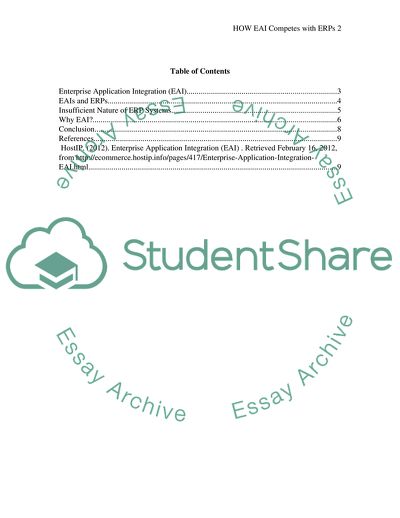Cite this document
(How Enterprise Application Integration Competes with ERPs Report Example | Topics and Well Written Essays - 1250 words, n.d.)
How Enterprise Application Integration Competes with ERPs Report Example | Topics and Well Written Essays - 1250 words. https://studentshare.org/information-technology/1766457-how-enterprise-application-integration-eia-competes-with-erps
How Enterprise Application Integration Competes with ERPs Report Example | Topics and Well Written Essays - 1250 words. https://studentshare.org/information-technology/1766457-how-enterprise-application-integration-eia-competes-with-erps
(How Enterprise Application Integration Competes With ERPs Report Example | Topics and Well Written Essays - 1250 Words)
How Enterprise Application Integration Competes With ERPs Report Example | Topics and Well Written Essays - 1250 Words. https://studentshare.org/information-technology/1766457-how-enterprise-application-integration-eia-competes-with-erps.
How Enterprise Application Integration Competes With ERPs Report Example | Topics and Well Written Essays - 1250 Words. https://studentshare.org/information-technology/1766457-how-enterprise-application-integration-eia-competes-with-erps.
“How Enterprise Application Integration Competes With ERPs Report Example | Topics and Well Written Essays - 1250 Words”. https://studentshare.org/information-technology/1766457-how-enterprise-application-integration-eia-competes-with-erps.


